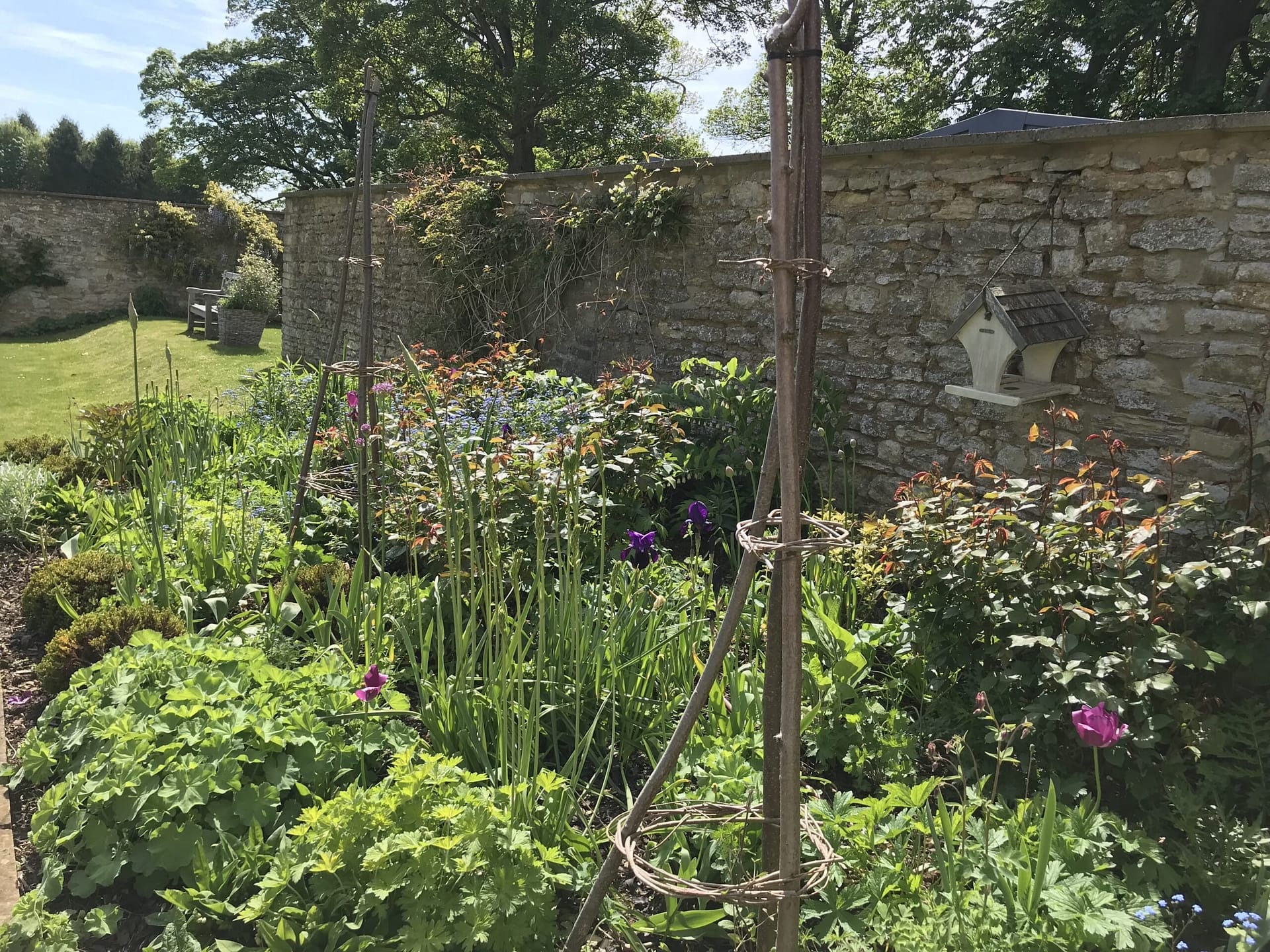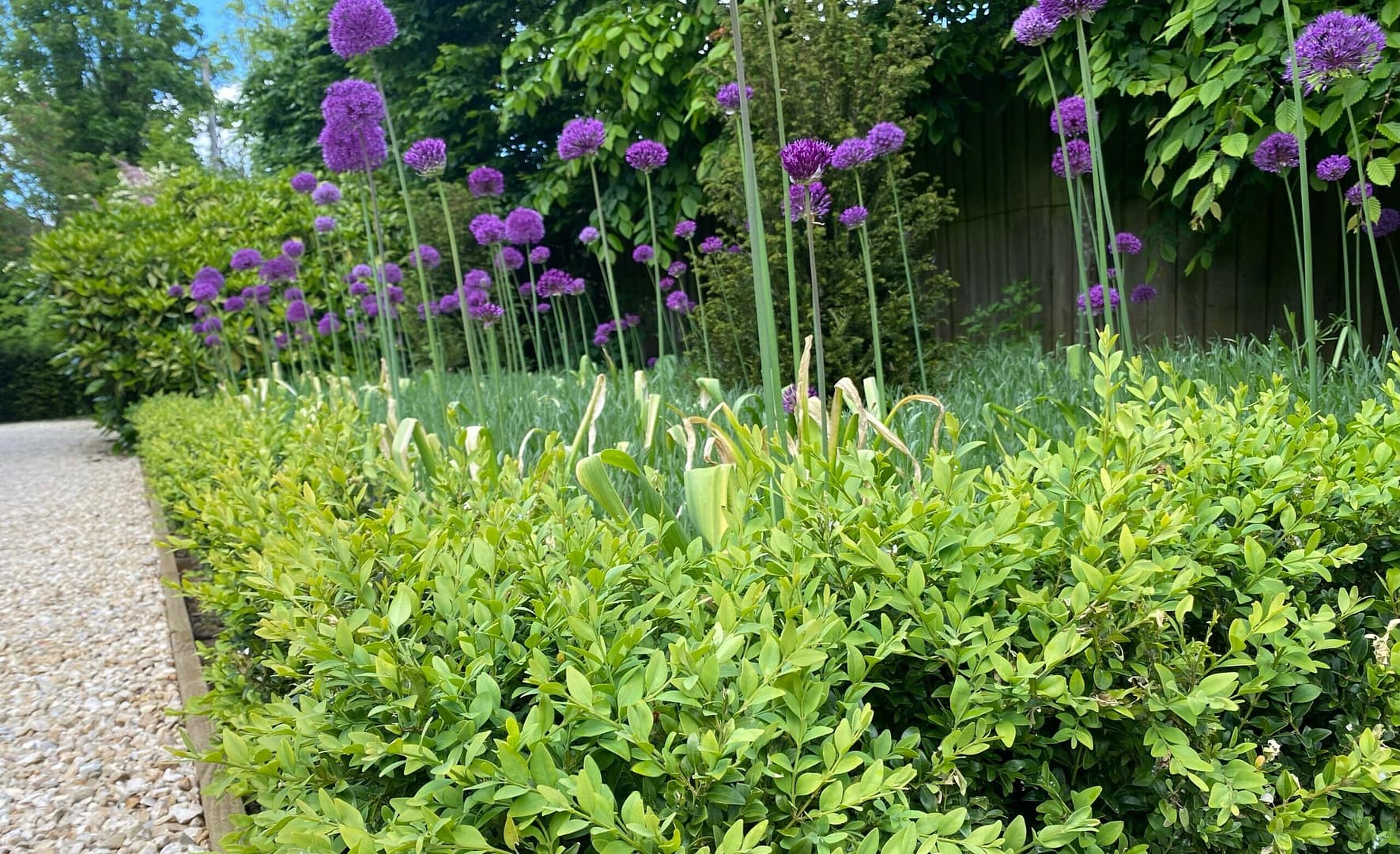When forming any outdoor feature such as a garden room or a secluded path, then borders or edges naturally arise.
Seen a lot in contemporary garden design, we find many defined landscaping looks that include structures such as paving stones and metal edging. Visibly stronger to the eye, these harder elements can give your garden both a greater sense of structure and neatness. However, if you are looking for a softer way to dress your slick garden edges, then soft landscaping and natural garden materials may be the perfect alternatives for you. Fashioning a more inviting and natural scene that gives back to the environment, planting up your untouched edges and borders can be a fantastic way of preserving the natural notion of your garden. Easily implemented yet effective, here are our 6 quick tips to elegant garden edging!
1. Bloom-filled driveways
An understated outdoor feature, driveways are in fact a crucial and unique part of both your garden and your home. Establishing the initial character and personality of your home, driveways are the daily greeting that welcomes you and your loved ones inside. Whether your drive is gravel-chipped or fitted with stone pavers, planting is the perfect way to intertwine hard and soft elements together. Dressed with drifts of fragrant lavender, why not awaken your outdoor entrances with a planting scheme filled with fragrant and vibrant blooms for year-round interest.
2. Boxwood hedging
Buxus or ‘Boxwood’ is a glorious evergreen plant that creates a refined and sophisticated garden edge. If you’re looking to enclose your garden borders or flowerbeds then including a natural fencing of Boxwood is a wonderful way of softly shaping a variety of edges and natural green fencing.

3. Woven willow
If your garden has more of a traditional English cottage feel, then willow can be a great material to use for edging. Possessing a delightful natural palette that blends seamlessly within a variety of landscapes, willow is a durable form of edging that can shelter both kitchen and cutting gardens from strong winds and weather.
4. Ground-cover plants
When debating how to create a unique garden edge, planting is a great solution. Filled with vibrant and pollinator friendly plants, a vivid planting scheme is a great way of introducing colour and movement to a range of untouched and empty spaces. Low-growing plants such as Brunnera macrophylla, Heuchera and Geraniums are just a few charming examples of how groundcover plants can add a subtle burst of colour and life to your edges. Or if you’re looking to continue a palette of greenery in a rather shady space, then ferns such as Dryopteris are perfect for sectioning areas with a wild yet elegant aesthetic.

5. Raised beds
If you’re on the look out to fill a space that is a bit on the larger size then why not make the most of these areas with an assortment of raised beds. From tulips and roses to sweet peas and hydrangeas, using a collection of stylish sleepers why not create a row of flourishing flowerbeds? Oozing handfuls of burgeoning blooms, raised beds allow you to access freshly cut blooms at your fingertips, diffusing swathes of sweet floral fragrance around your garden and your home!

6. What about herbs?
When thinking of garden edging, herbs may not be a suggestion that would typically spring to your mind. But, yes! You can indeed use herbs to enhance a number of garden borders and edges. Delightfully aromatic and a culinary treat, Thyme is a glorious example of a herb that can be used to add a touch of evergreen structure and scent to your surroundings.

Enjoying reading about all things horticulture? Why not take a stroll through our stories and learn a range of unique gardening tips and tricks!


